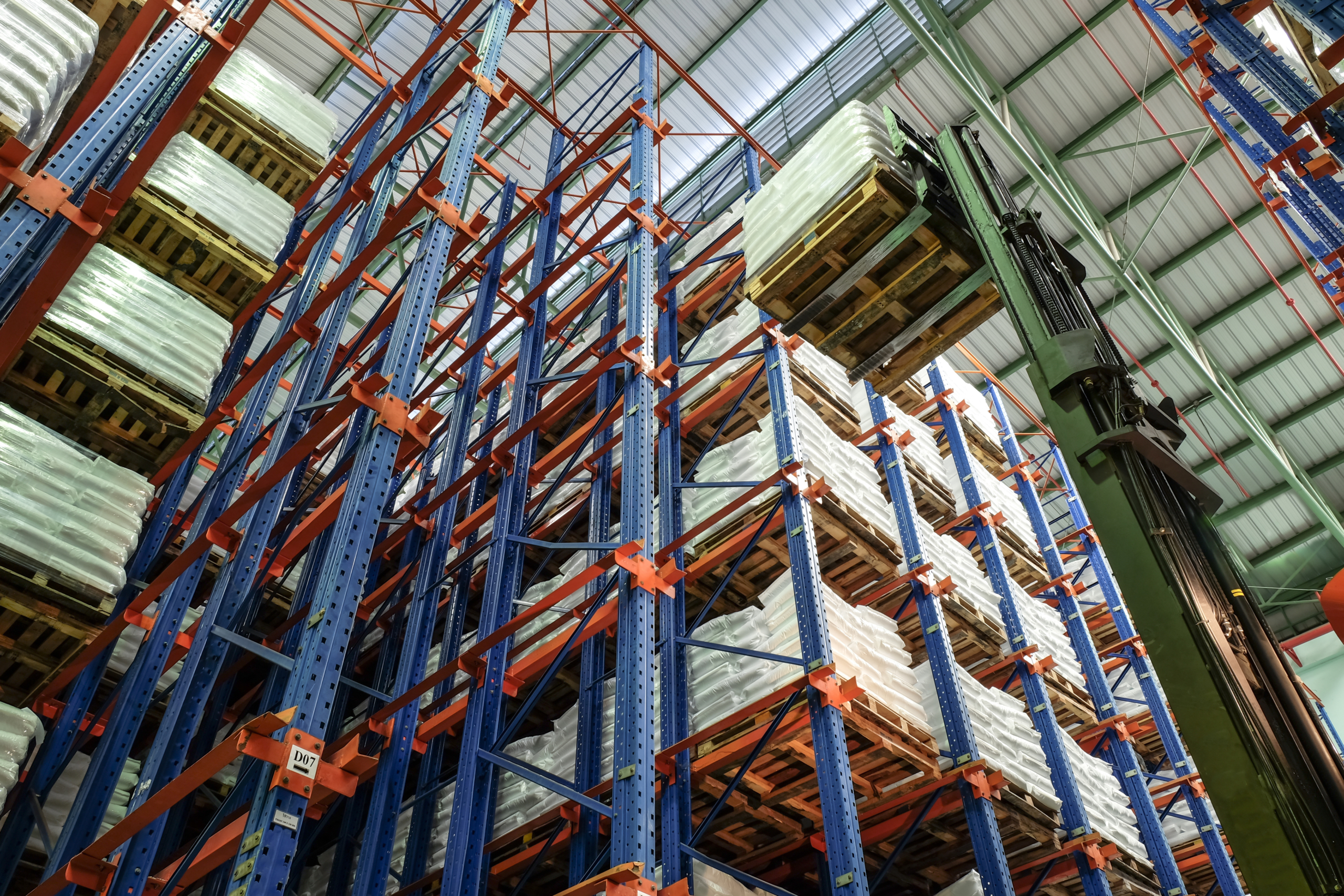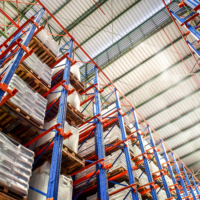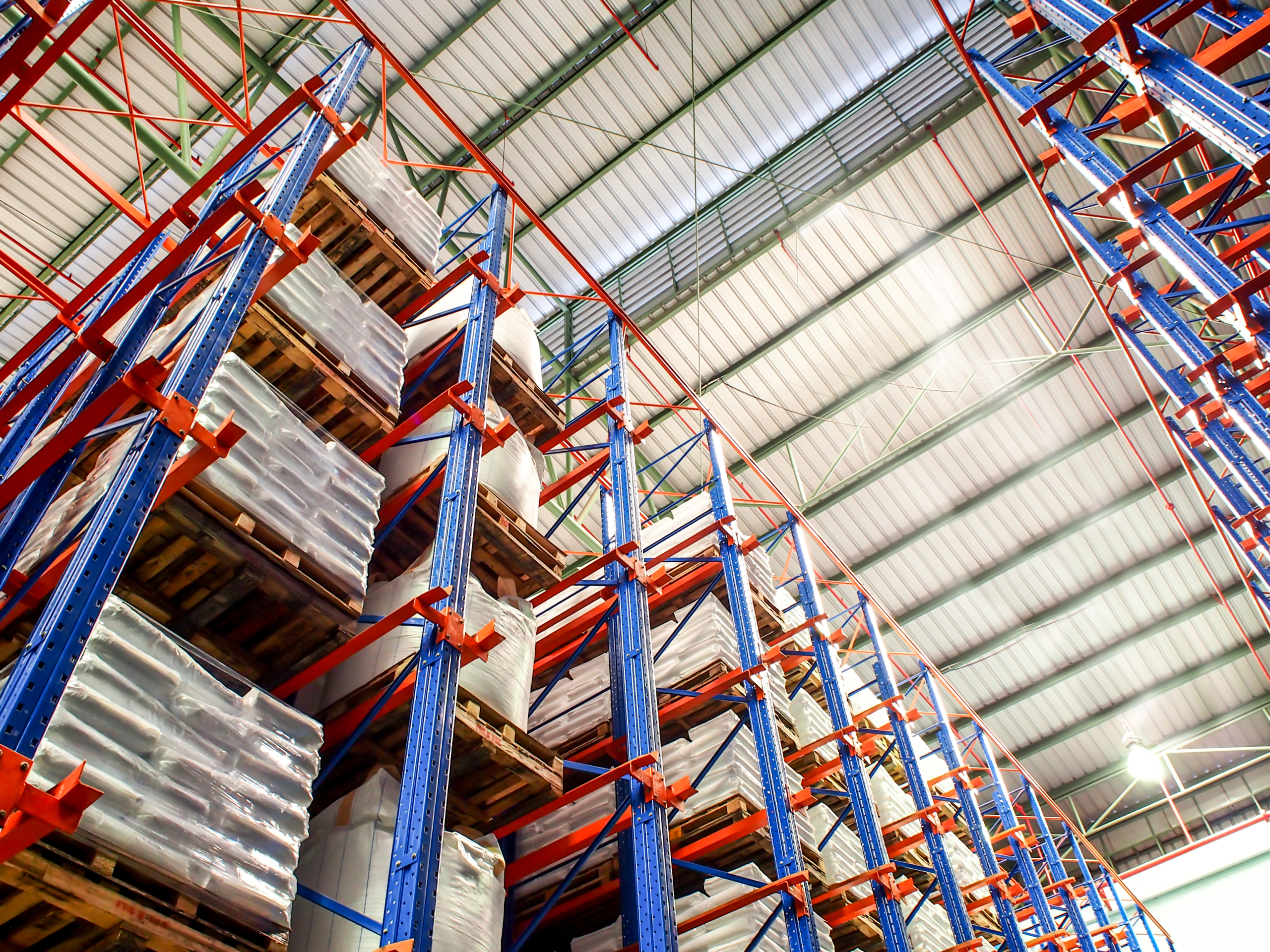Drive-in racks have a different type of layout, whereby optimal use is made of the available space, both in height and in width. These racks are typically used for large quantities of the same products with a low turnover rate.

Advantages
- Up to 85% of the available space is used
- Very compact storage system
- A minimum number of aisles is used
- Cost-effective system thanks to the optimisation of the available space (less heating or cooling costs)
Suitable for…
- Products with a lower turnover rate
- Similar products
- A large number of pallets per item number/product
LIFO or FIFO?
Drive-in rack versus drive-trough or flow rack: what is the difference?
The drive-in rack
For loading and unloading according to the LIFO principle (Last in, First out)
The pallets are taken in and out of the racks via the same aisle, i.e. this always happens on one side of the rack. The last pallets stored are therefore taken back out first. Indeed, when many pallets with the same item are stored, it is not necessary to have direct access to a specific pallet.
The drive-through rack
For loading and unloading according to the FIFO principle (First in, First out)
Because a drive-through rack is accessible from both sides, pallets can be put onto the rack from one side and taken out from the other side. The pallets stored first are therefore taken out first too.
Do you need a pallet storage system whereby each pallet is accessible individually? A classic pallet rack is ideal for this.


